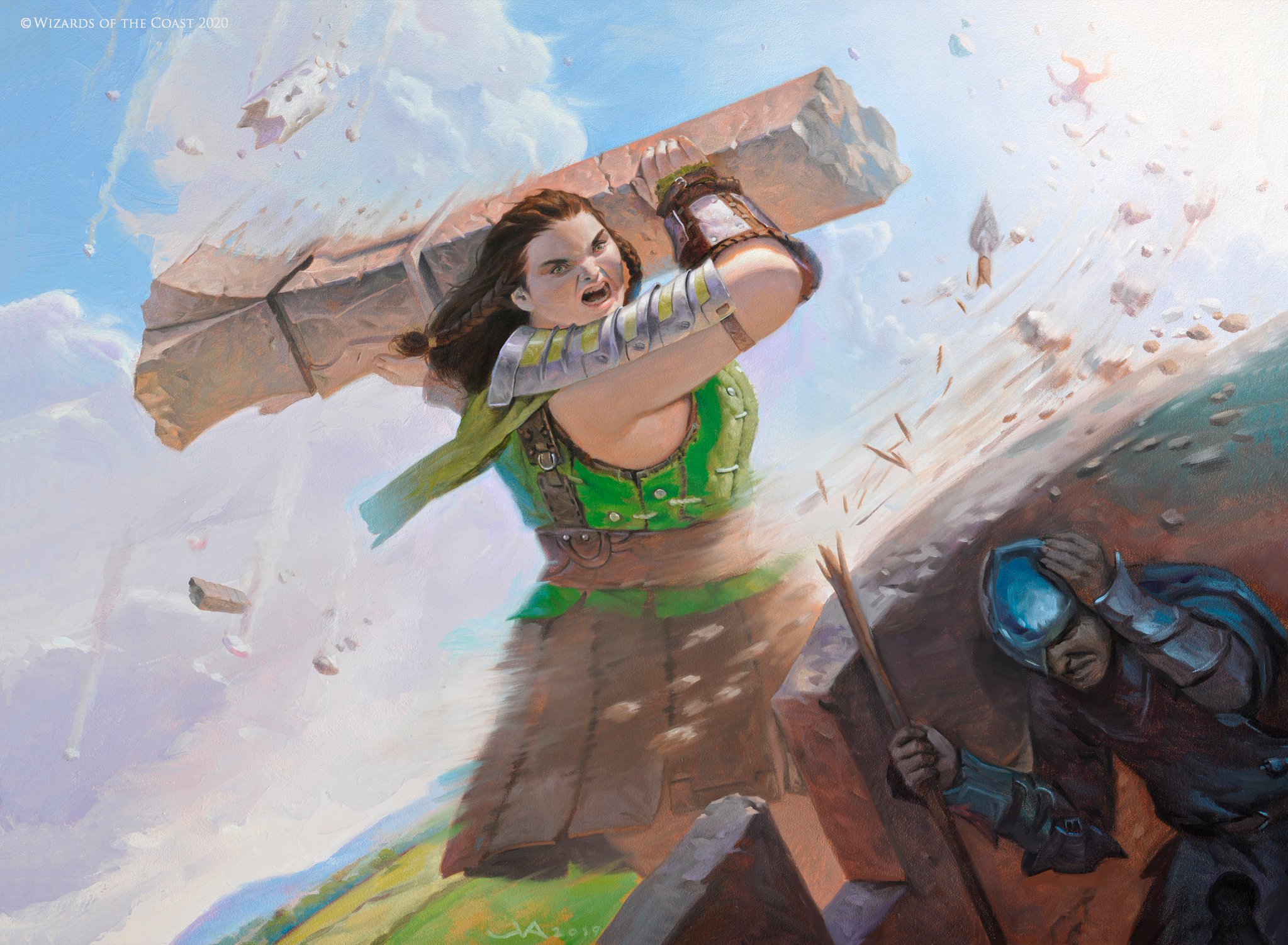Cover 5e
Published on November 23, 2023, Last modified on December 27th, 2023
Navigate the D&D battlefield like a tactician by mastering 5e cover mechanics! Learn to use it offensively, defensively, and how to negate it’s effects.

Victor Adame Minguez - Wizards of the Coast - Towering Titan
Table of Contents
Taking Cover in 5e
Whether you’re a player looking to up your strategic game or a Dungeon Master looking for more dynamic battles, there are few things that can spice encounters up as an easily defendable position can. One side having cover while the other doesn’t can easily turn the tide of battle and add depth to player and monster’s tactical decisions.
In this guide, we’ll delve into the nuances of cover in D&D 5e, and show you how to better use it in your game.
What is Cover in D&D 5e?
In the heat of battle, characters often seek protection behind walls, trees, or other obstacles. This is where the cover mechanic comes into play. Cover in D&D 5e provides characters with added defense against attacks and harmful effects, representing the physical obstruction between them and their assailants.
Types of Cover
D&D 5e categorizes cover into three main types:
- Half Cover: Objects like low walls, large furniture, or other creatures provide half cover. It grants a +2 bonus to Armor Class (AC) and Dexterity saving throws against attacks and effects that originate from the opposite side of the cover.
- Three-Quarters Cover: This includes situations where most of a character is protected, like peeking out from behind a narrow tree trunk or a heavily barred window. Three-quarters cover gives a +5 bonus to AC and Dexterity saving throws.
- Total Cover: When a character is completely shielded from their attacker, they have total cover. This type of cover makes them effectively invisible to the attacker, meaning most direct attacks can’t hit them. However, some area effects might still reach them.
Tactical Uses of Cover
Dropping Prone: You can drop prone without spending any movement. This provides ranged attacks with disadvantage and may turn half cover into three-quarters or full cover. However, this move has a downside: enemies within 5 feet have an advantage on their attack rolls against you while you’re prone.
Hide Action: In D&D 5e, the Hide action is contingent on the character being out of an enemy’s line of sight, a situation often facilitated by cover. By hiding in combat, you gain advantage on attacks, though after you attack, you’ll need to move as your position will be compromised. This is explored more in-depth in our article on heavily obscured terrain.
Ways to Create Cover
Need to throw up a quick shelter in combat? Hopefully, you’ve got some of these spells on hand:
- Blade Barrier: This spell creates a vertical wall of whirling, razor-sharp blades made of magical energy. The barrier can be up to 20 feet high and provides three-quarters cover, preventing any physical passage through it.
- Bigby’s Hand: This versatile spell can be used as an Interposing Hand that can be positioned to provide half cover.
- Stone Shape: This spell allows the caster to reshape a stone object or section of stone. It can be used to create stone walls or barriers that provide cover.
- Mold Earth: For the cantrip Mold Earth, while it has limitations due to its smaller scale, it can still be used creatively to create cover, especially in outdoor, earthen environments. By moving loose earth, a character can create a small wall to hide behind or dig a pit to jump into.
- Leomund’s Tiny Hut: This spell creates a dome of force that completely encloses the caster and offers total cover from all physical attacks outside the dome. Unfortunately, they can’t leave the dome to attack creatures, but their allies can.
- Prismatic Wall: This spell creates a multi-layered wall of light that provides total cover and has additional harmful effects on creatures trying to pass through it.
- Wall of Force: An invisible wall of force creates an impenetrable barrier. Since it’s invisible, it doesn’t block line of sight, but it still provides total cover against physical attacks.
- Wall of Ice: Similar to Wall of Stone, Wall of Ice can be formed to create a solid barrier. It not only provides total cover but also can deal damage if it’s shattered.
- Wall of Stone: This spell creates a nonmagical wall of solid stone that can be shaped into panels. It can completely block line of sight, providing total cover.
Working Around Cover
Got some enemies that won’t come out of their hidie holes? Here are some ways to navigate this tactically intimidation situation:
- Sharpshooter and Spell Sniper: These feats are valuable for archers and spellcasters, as there will certainly be situations where your targets will have sought cover. Sharpshooter is for archers, while Spell Sniper is for spellcasters. Both feats enable the user to ignore half and three-quarters cover when making attack rolls, on top of other benefits.
- Arcane Archer’s Seeking Arrow: This option is one of the choices from Arcane Archer’s Arcane Arrow ability. Seeking Arrow allows an Arcane Archer to shoot an arrow that bypasses half or three-quarters. The requirements for using this ability include having a clear path for the arrow and having seen the target within the last minute.
- Spells and Cantrips Ignoring Cover: Certain spells and cantrips explicitly state that cover does not benefit the target. A notable example is the cleric cantrip sacred flame, which ignores the benefits of cover. Additionally, some Area of Effect (AoE) spells wrap around cover. This is usually noted by wording along the lines of, “The [effect] spreads around corners.” being included in the spell’s description.
- Magic Missile: This classic spell, known for its reliability, automatically hits its target as long as it can be seen. This mean that half and three-quarters cover provide no defense against it.
